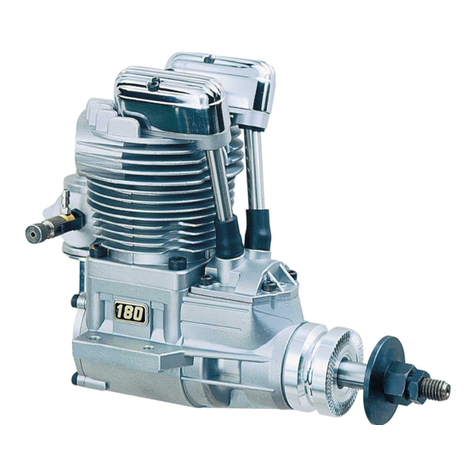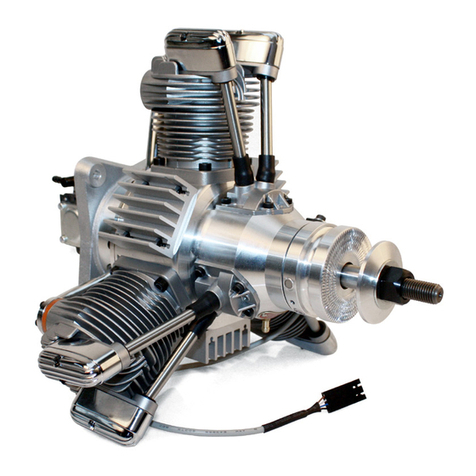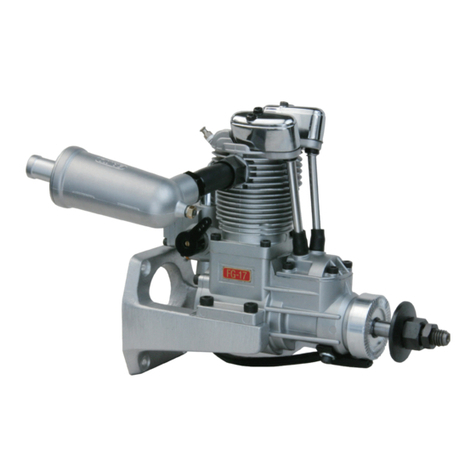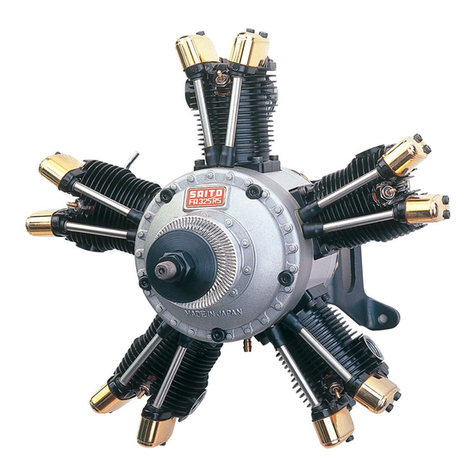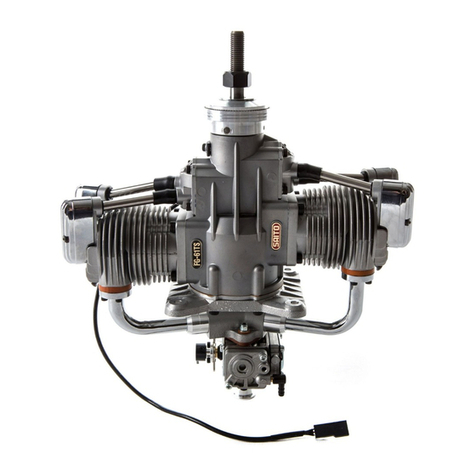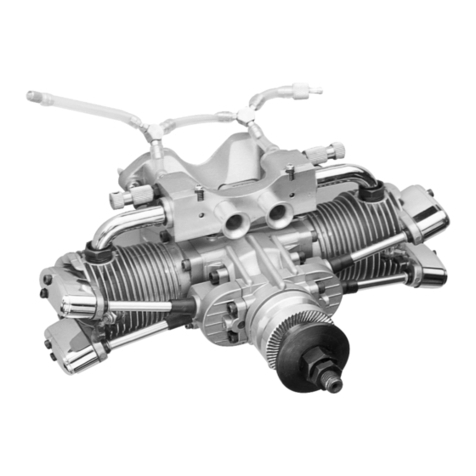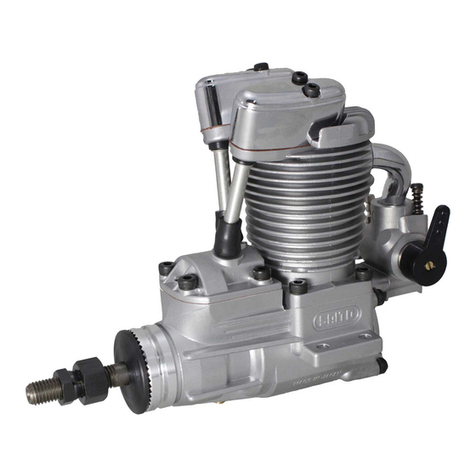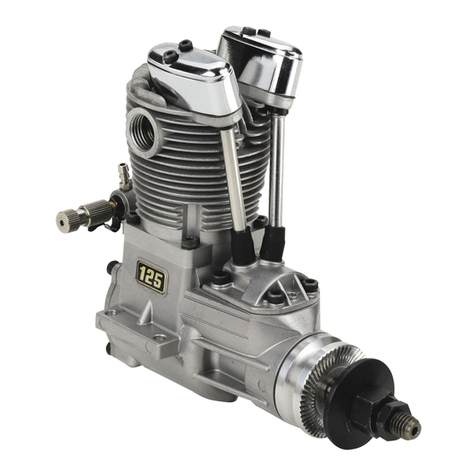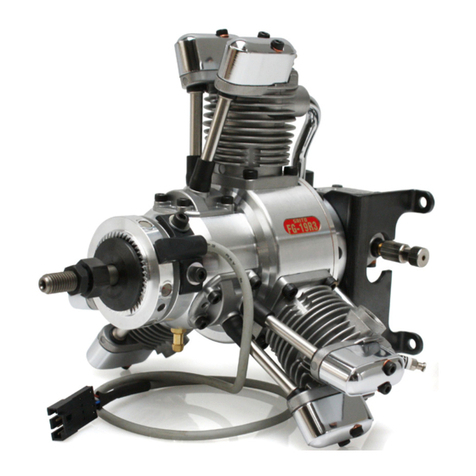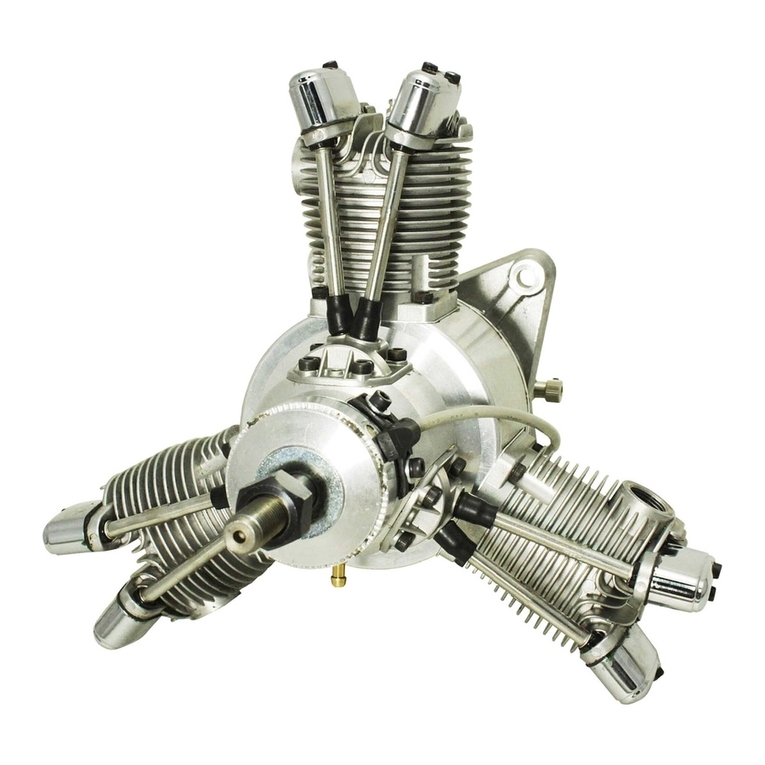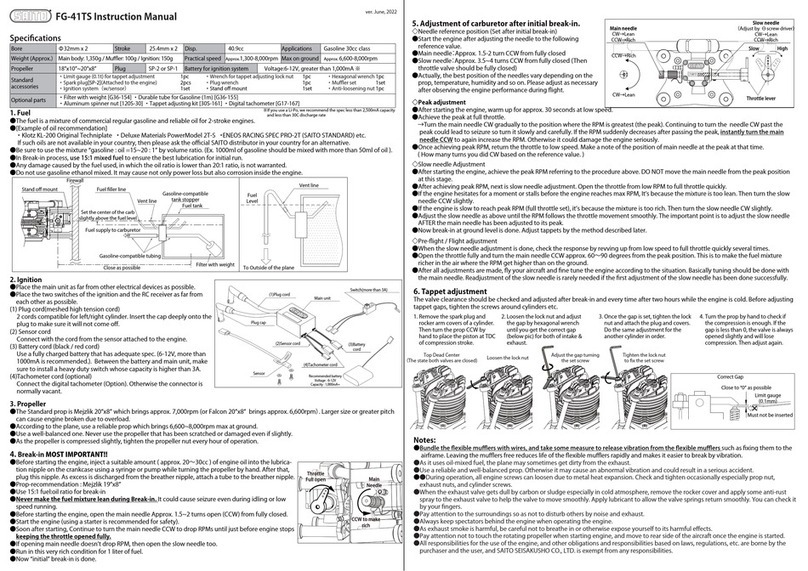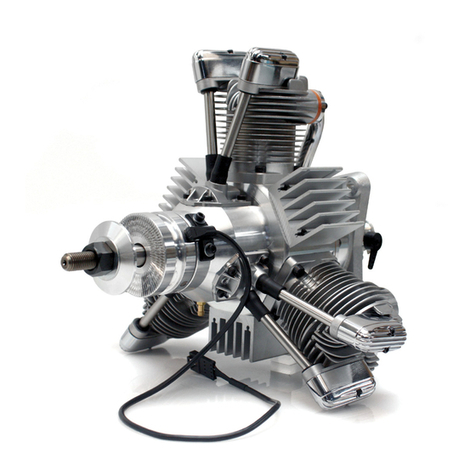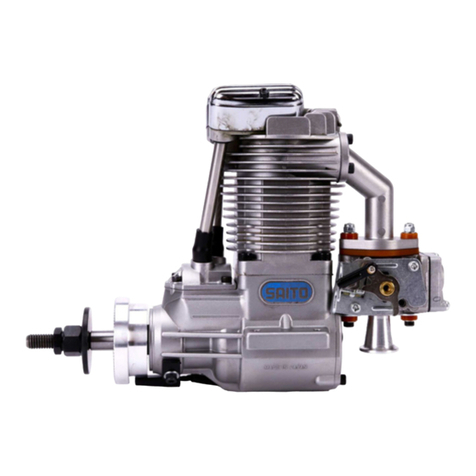Support Equipment
The following items, which are not
included with your Saito engine, are
necessary in order to operate the
model engine:
1. Fuel. For maximum protection
and longevity of its engines, Saito
recommends a fuel containing a
20:1 gasoline to oil ratio. We recom-
mend a synthetic based oil such as
Evolution Oil (EVOX1001Q). High
octane fuel is not needed for this
engine.
2. Propeller and Fuel Consumption:
If you are using a high load (prop
diameter and or pitch is large), the
air-fuel mixture needs to be richer
than with a light load. The main
high-speed needle will need to be
opened even though the rpm's will
be lower than if you were using
a smaller propeller. Conversely
if you are using a low load (prop
diameter and or pitch is small), the
air-fuel mixture needs to be leaner
than with a heavily loaded engine.
The main, high-speed needle will
need to be closed, even though the
rpm's will be higher than if you
were using a larger propeller. For
the longest engine life and best fuel
consumption, the propeller you
choose should provide your best
level flight speed at less than full
throttle.
3. Fuel Filter and Fuel Pump.
Because commercial gasoline has
many impurities be sure to use a
reliable filter when refueling the
onboard tank of the aircraft.
CAUTION: If a quality filter
system is not used impurities and
dirt will be transported to the carb,
clogging internal filter screens and
passages, possibly causing an engine
failure or poor running of your engine.
This could lead to a crash resulting in
injury or property damage.
4. Fuel Tank. Choose a tank with
a capacity of 14–17 ounces (400-
500cc's). This will provide on
average a flight time of 11 to 14
minutes at full throttle. Make sure
you use a gasoline-compatible fuel
tank stopper and gasoline-
compatible fuel line both inside the
tank and for all connections outside
of the tank. (We recommend
SAIG36155 for your internal and
external fuel line) In the fuel line
between the tank and the carburetor,
make sure you use an inline fuel
filter of some type (HAN143
recommended). We also recommend
you use SAIG36154 Filter with
weight as your clunk inside the tank.
5. Spark Plug Wrench. An included
spark plug wrench is used to remove
and tighten spark plugs.
6. Manual or Electric Starter. For
manual starts, a heavy-duty leather
glove is highly recommended.
4 SUPPORT EQUIPMENT

